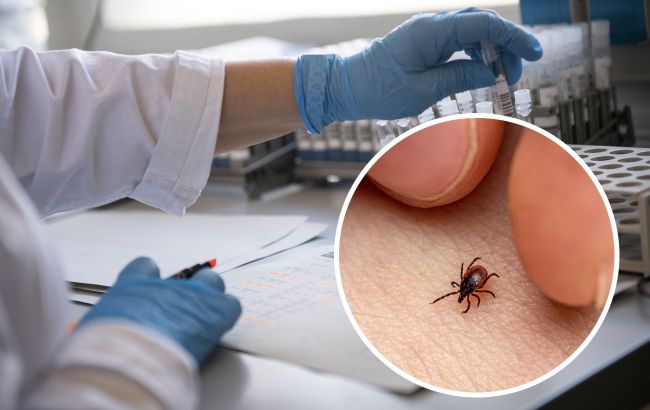Lyme disease and its main symptoms
 RBC-Ukraine collage
RBC-Ukraine collage
Lyme disease, caused by the bacterium Borrelia, typically infects humans through the bite of a tick carrying the bacteria. Pediatrician Daryna Vlasenko provides insights into the disease and its main symptoms.
Ticks and Lyme disease
Ticks are less likely to transmit Lyme disease if removed within 24 hours of attachment. The risk of infection increases during spring, summer, and fall, although ticks can be active whenever temperatures rise above freezing.
Symptoms of Lyme disease
The tick bite may appear as a small, itchy bump on the skin, resembling a mosquito bite, but this doesn't necessarily indicate Lyme disease. Symptoms typically manifest gradually, with some overlapping stages. Moreover, some individuals may not exhibit typical early-stage symptoms.
First stage
Early Lyme disease symptoms usually emerge within 3-30 days after a tick bite. This stage presents a limited set of symptoms. A rash, resembling a bull's-eye or apple seed, is a common sign but not always present. This rash, seen in 8 out of 10 Lyme patients, often feels warm to the touch but is usually painless and non-itchy.
Don't confuse this for a hypersensitivity reaction to a tick bite, which typically develops during tick attachment or within 48 hours of removal. Unlike the migrating erythema of Lyme disease, hypersensitivity reactions to tick bites usually start to fade within 24-48 hours.
Other early-stage symptoms include:
- Fever
- Headache
- Fatigue
- Joint stiffness
- Muscle pain
- Swollen lymph nodes
Second stage
The disease can progress without proper treatment. Symptoms often arise within 3-10 weeks after the tick bite. The second stage, often more severe and widespread, is termed early disseminated disease.
Stage 2 symptoms may include those from Stage 1 and also:
- Multiple rashes on other parts of the body
- Neck pain or stiffness
- Muscle weakness on one or both sides of the face
- Pain in the back and legs
- Painful swelling of the eye or eyelid
- Immune system activity in heart tissues
Third stage may deveop and symptoms from the first and second stages may persist along with additional symptoms.
This material is for informational purposes only and should not be used for medical diagnosis or self-treatment. Our goal is to provide readers with accurate information about symptoms, causes, and methods of detecting diseases. RBС-Ukraine is not responsible for any diagnoses that readers may make based on materials from the resource. We do not recommend self-treatment and advise consulting a doctor in case of any health concerns.

